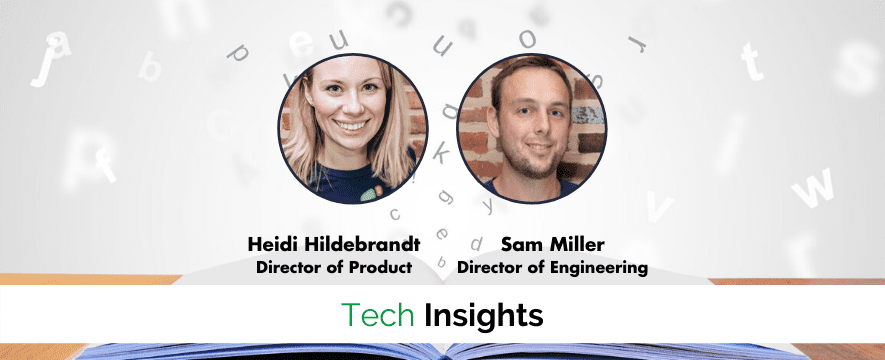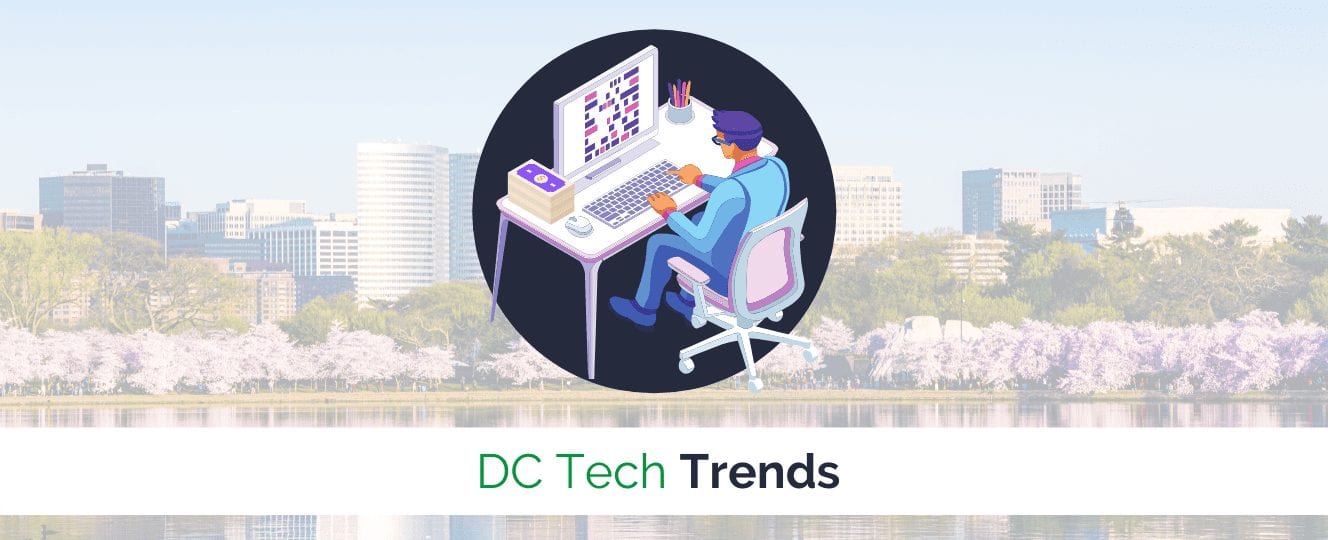An inside look at the Product and Engineering Teams of a quickly growing startup
Scaling a technical team to meet product demand is an exciting prospect. But there are a lot of decisions to make: Do you stay flat or bring in engineering leadership? Do Product and Engineering work side by side or in separate groups? How do you stay agile while actively growing?
Osmosis is a Baltimore startup on a mission to provide the best learning experience possible to both current and future medical professionals.
As more users tap into Osmosis’ platform, their product and engineering teams have expanded to meet the demand.
We spoke with Heidi Hildebrandt, Director of Product, and Sam Miller, Director of Engineering, to see how they are scaling their team amongst this rapid growth.
Heidi and Sam have centered the growth process around several core values:
- Staying close to the voice of their users and focusing on their users’ biggest pain points.
- Differentiating between product and engineering, while keeping a collaborative environment between the two teams.
- Empowering their teams with relevant information to make decisions and pivot quickly.
This conversation has been edited for length and clarity.
What is the biggest problem that your team is solving?
Heidi: Osmosis creates accessible health education.
Medical students frequently describe the learning process as “drinking from a fire hose.” Our team created a platform where students can access the same information that they would get in school, but in a way that’s not completely overwhelming.
That means taking the student out of the classroom and letting them learn at their own pace and focus on their weaknesses. Our content team incorporates learning strategies – like memory anchors and storytelling – to make the videos interesting and memorable.
How do you collect user feedback to make sure you’re solving the right problems?
Heidi: We have customers and users at the center of our focus at Osmosis. It’s always been that way. Ever since the beginning. Even when there were only 10 of us, we’d all jump in and read the feedback that users shared with us.
We’ve scaled that, so now we have a customer success team who helps document, tag, and analyze user feedback as students write in with questions. We also have an Osmosis Medical Education Fellowship program (OMEF) where we have students in Slack with us, providing feedback. They’re always available if we have questions.
Sam: Hearing the voice of users has been baked into our process from the start. The co-founders, Shiv and Ryan, founded the company when they were students at Johns Hopkins. They would talk with fellow students and started to solve their own problems. The feedback loop was very quick. Over the years, we’ve relied on the same intuitions, even as we’ve gotten farther from the user. We now have an established process of looking at user data, studying user flow, and talking to users to get the user experience just right.
One of the challenges we face is not being too reactive to user feedback. As you connect with more and more students, you get more ideas about how to make Osmosis the “best platform ever if you just added XYZ feature.”
We try to balance that by looking at the raw data. We have a number of different tracking platforms that help us look at what students are actually doing on the site. We have these ideas about what may or may not work, so we use A/B testing to look at whether it actually effects change.
For example, you might have 100 user comments saying one thing and it seems like a lot of feedback. But when you have 20,000 users per day, you have to put that into your equation. For example, if the raw data tells us that 15,000 users are doing this other thing, you might have to look at that.
So, in all, it involves listening to users – both when they give feedback and based on how they’re using the site.
How do you create an environment where your teams are empowered to adapt quickly and solve problems?
Heidi: One aspect is that the leaders at Osmosis have identified the company’s values and strategy. We know who we are as a company and stay true to it. Knowing those fundamentals has allowed our team to make the right decisions.
On a practical note, I’ve also found that keeping detailed documentation has helped our team.
We are also very intentional about inviting the designers and developers into the user research process. This gives them context on the user problems.
Our leadership really tries to democratize decisions and empower the team with information, so they can make the right choices.
In general, there’s this mentality of trust amongst the team. We assume the best of the person we’re working with.
Sam: Another thing that helps our team make quick decisions is the fact that it’s a fun place to work and there’s purpose in our work. Even before COVID-19 hit and infused this much greater purpose into the work that we’re doing, we felt like we had great purpose in improving healthcare education. While some of the engineers aren’t medical professionals, we still appreciate the good that our work is doing in the world.
It creates this perfect condition for an awesome workplace environment. It helps everyone to be flexible, adaptable, and energized about getting stuff done. It’s the culture, values, and purpose of Osmosis that makes it an exciting place to work.
The team structure also plays into our ability to be agile. Instead of keeping product and engineering separate, we’ve formed these smaller groups comprised of each realm, called a “team of teams.” Each of the small groups consists of developers, designers, and product managers. We created that structure before the COVID crisis and it has made us very agile. These smaller teams are able to tackle things quickly and adapt to the needs of the business.
What does collaboration between engineering and product look like?
Heidi: We’ve actually been so integrated that we’re trying to separate now. We recently grew the product team and are starting to encourage a bit of separation so each team can know what they should focus on.
Sam: As developers, we’ve actually called ourselves the product team since the early days. We recently realized we needed team members who were focused on product related questions and solutions. That way the engineers can focus on just the engineering side of things.
Collaboration is at the core of these two teams, so I think that will keep us tied together rather than becoming siloed.
Did your teams face any new challenges from COVID-19? How have you adapted to address those challenges?
Heidi: One of our efforts is to “raise the line” and prepare more people to help treat COVID-19.
Our Chief Medical Officer worked for the CDC and has a career background in infectious disease. He’s been instrumental in adapting quickly to create the content that’s needed for COVID-19.
So, during these times, I think the super-power of Osmosis is the knowledge from our Chief Medical Officer and the speed of the content team.
We now have pages where patients, medical students, and people just interested in educating themselves about COVID can all land.
Since we were very intentional about the user flow and experience of the site, we’ve been able to manage the influx of users.
Sam: One of the cool things for us was the fact that we already had a site that was very user friendly, with content that’s easy to understand. A lot of design work, in terms of designing a user flow, has gone into the site over the last few years. That prepared us well, so there wasn’t a mad rush to create a system that can handle the influx of traffic.
You all are literally in the business of creating content. Where do you go to find content that will help you keep developing your career?
Heidi: Our company culture encourages a lot of sharing of articles and podcasts. One of my favorite books is Marty Cagan’s “How to Create Products that Customers Love.” He also has a blog, Silicon Valley Product Group (SVPG). I’d also recommend the Inside Intercom podcast.
Sam: Sharing content is built into the culture here. Shiv, the CEO, reads an insane amount of literature. He’s always giving recommendations on what to read.
There’s a really cool program at Osmosis that if you write a book report on something you’ve read, they typically pay for the book. They do this because you’re taking that information and helping diffuse it out to the rest of the team by writing a succinct book report.
Personally, a book I’d recommend to anyone leading a team is the “Trillion Dollar Coach.”





